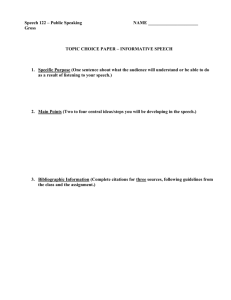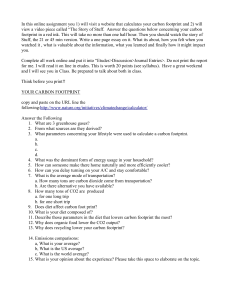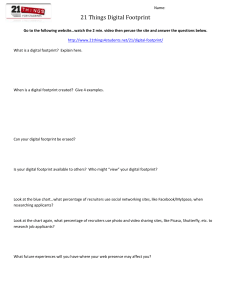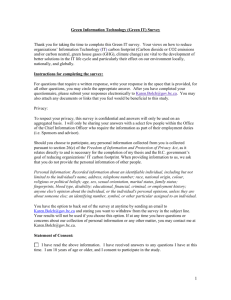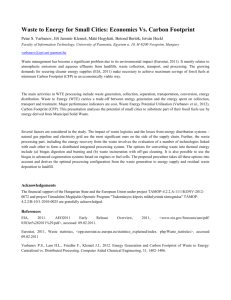Activity 2.3: Eco-footprint calculator
advertisement
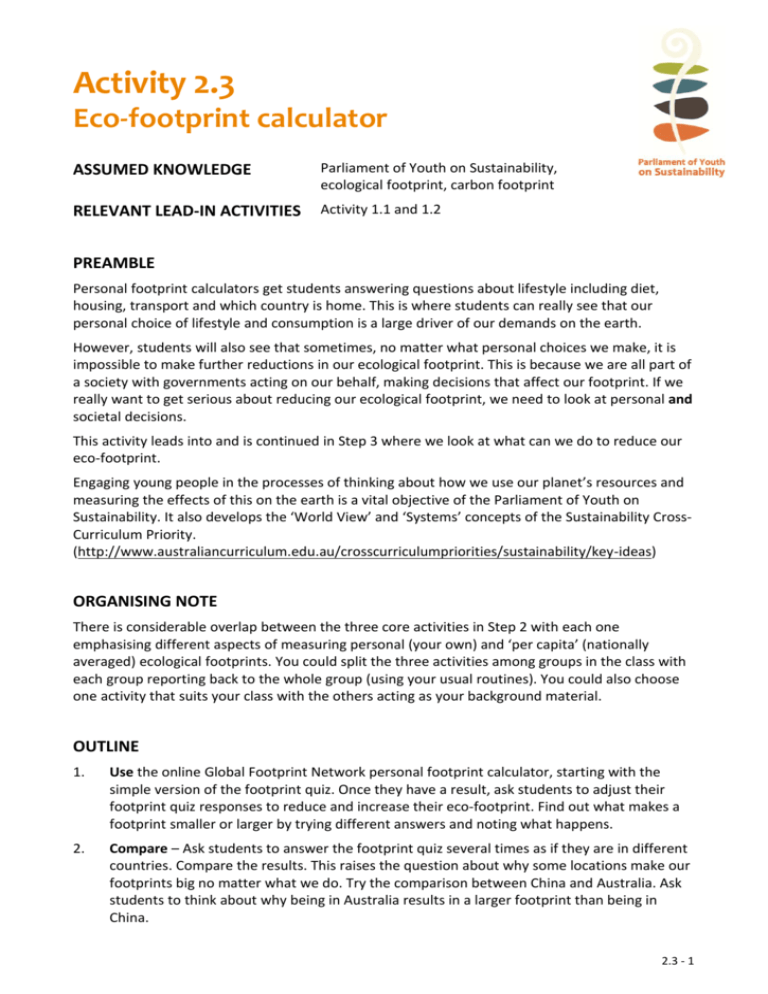
Activity 2.3 Eco-footprint calculator ASSUMED KNOWLEDGE Parliament of Youth on Sustainability, ecological footprint, carbon footprint RELEVANT LEAD-IN ACTIVITIES Activity 1.1 and 1.2 PREAMBLE Personal footprint calculators get students answering questions about lifestyle including diet, housing, transport and which country is home. This is where students can really see that our personal choice of lifestyle and consumption is a large driver of our demands on the earth. However, students will also see that sometimes, no matter what personal choices we make, it is impossible to make further reductions in our ecological footprint. This is because we are all part of a society with governments acting on our behalf, making decisions that affect our footprint. If we really want to get serious about reducing our ecological footprint, we need to look at personal and societal decisions. This activity leads into and is continued in Step 3 where we look at what can we do to reduce our eco-footprint. Engaging young people in the processes of thinking about how we use our planet’s resources and measuring the effects of this on the earth is a vital objective of the Parliament of Youth on Sustainability. It also develops the ‘World View’ and ‘Systems’ concepts of the Sustainability CrossCurriculum Priority. (http://www.australiancurriculum.edu.au/crosscurriculumpriorities/sustainability/key-ideas) ORGANISING NOTE There is considerable overlap between the three core activities in Step 2 with each one emphasising different aspects of measuring personal (your own) and ‘per capita’ (nationally averaged) ecological footprints. You could split the three activities among groups in the class with each group reporting back to the whole group (using your usual routines). You could also choose one activity that suits your class with the others acting as your background material. OUTLINE 1. Use the online Global Footprint Network personal footprint calculator, starting with the simple version of the footprint quiz. Once they have a result, ask students to adjust their footprint quiz responses to reduce and increase their eco-footprint. Find out what makes a footprint smaller or larger by trying different answers and noting what happens. 2. Compare – Ask students to answer the footprint quiz several times as if they are in different countries. Compare the results. This raises the question about why some locations make our footprints big no matter what we do. Try the comparison between China and Australia. Ask students to think about why being in Australia results in a larger footprint than being in China. 2.3 - 1 3. Find out and homework – Ask students to gather some facts from home such as energy bills, information about the family diet, family transport and home construction. Try the footprint calculation again using the more detailed footprint quiz. RESOURCES Footprint calculator – online: Global Footprint Network personal footprint calculator at http://www.footprintnetwork.org/en/index.php/GFN/page/calculators/ or click on the picture: Allow at least 10 minutes to use the simple version of the calculator, longer for a more detailed calculation. Alternative for younger students or if online resources are not accessible: Use the Cool Australia ecological footprint worksheet at http://www.coolaustralia.org/activity/clean-up-myenvironmental-footprint/ (you will need to log in to the Cool Australia website). 2.3 - 2

